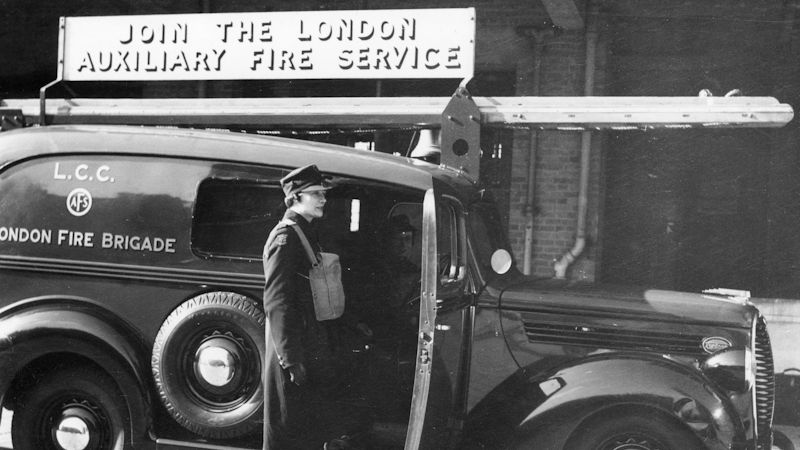
The Auxiliary Fire Service (AFS) was a voluntary service set up to assist existing fires services. Air raids were expected if war broke out, so extra help would be needed. Recruitment in London began in March 1938 with queues of people outside fire stations, eager to join the fire service.
A huge recruitment drive was launched encouraging women to join the fire service for the first time. Over 89,000 men and 6,000 women were mobilised countrywide for service in the AFS to help with the war on the home front.
Anne Brasnell (née Ware) volunteered to join the AFS in May 1939, and was based around the Bermondsey area. She was first appointed to Dockhead Fire Station.
During her induction into the AFS, Brasnell was assigned a 'Class D1' role, as a dispatch rider. Overall D class roles were for women and included:

Dispatch riders went through various training sessions
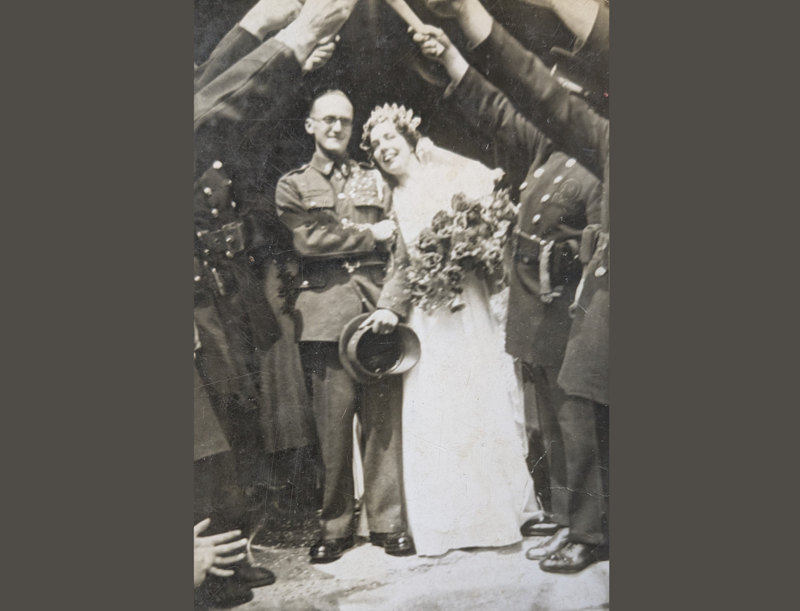
In 1940 Anne married George Brasnell, and the new couple were given a guard of honour by AFS firefighters on their wedding day – axes held high. George was an army sapper who worked on the search lights at Wimbledon during wartime.
The night of 7 September 1940 was the first targeted air raid on London. The Blitz had begun. For many members of the AFS this was their first experience of a real fire.
The beginning of the Blitz also marked a significant change in public opinion towards the fire service. During the period of the ‘phoney war’ firefighters had been thought of as ‘army dodgers’. However, in 1940 this attitude changed, and firefighters became known as ‘the heroes with grimy faces’.
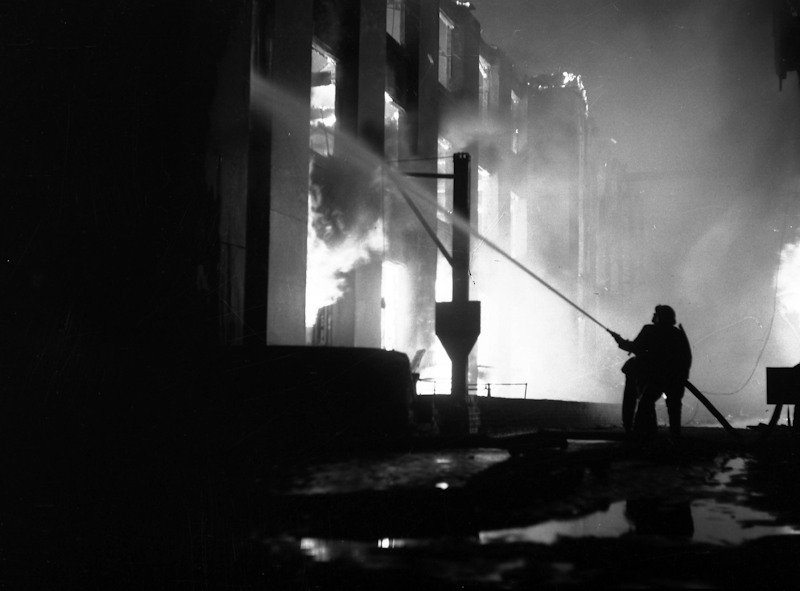
On this same night the sub station at Keetons Road in Bermondsey was hit during a bombing raid. Fire stations around London had a number of these AFS sub stations linked to them, so that trained personnel, and equipment, were ready to support them at a moment's notice. This sub station was based at a school commandeered for the war effort.
The sub station was also being used as a rest centre when it suffered a direct hit. Many were killed or injured as the school was full of evacuees. Brasnell showed gallant conduct by administering first aid to the injured and maintained communications until the station could be evacuated.
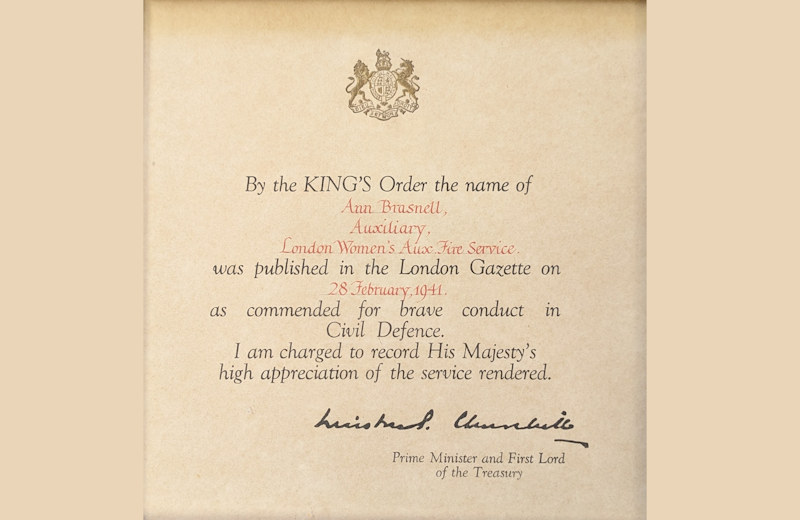
For such an act of bravery Brasnell was commended by King George VI in the London Gazette on 28 February 1941. She was also awarded the King’s Commendation for Brave Conduct and received a certificate from the Prime Minister, Sir Winston Churchill. It reads:
By the KING's Order the name of
Ann Brasnell, Auxiliary London Women's Aux Fire Service.
was published in the London Gazette on 28 February 1941
as commended for brave conduct in Civil Defence.
I am charged to record His Majesty's high appreciation of the service rendered.
Winston S. Churchill [signed]
Prime Minister and First Lord of the Treasury
The King’s Commendation for Brave Conduct, was introduced in the 1940s, and designed by Krugar Gary. It features two laurel leaves surrounding a sword with a crown on top. Across the badge ‘for brave conduct’ is embossed. Badges were intended for everyday wear in civilian dress.
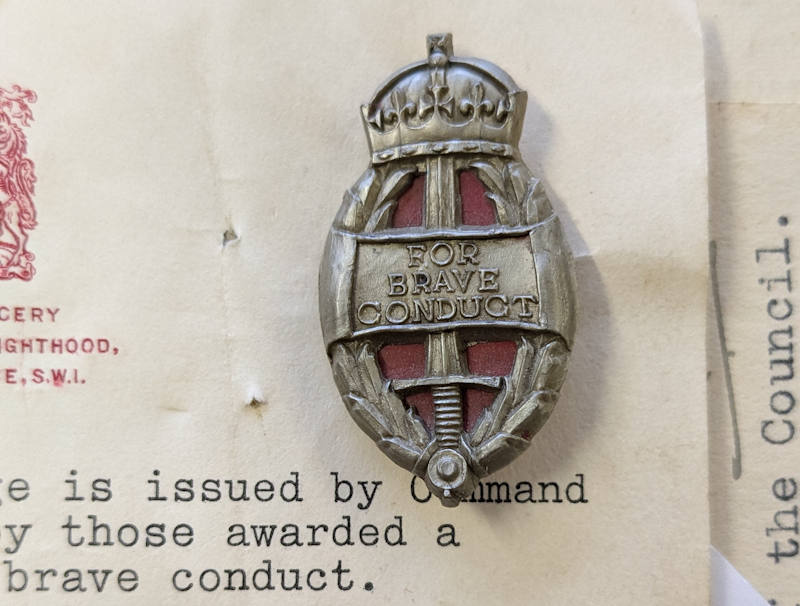
The oval badge is believed to be moulded in bronze-coloured plastic. Plastic may have been used for some badges because metal needed to be prioritised for tanks and aircraft. This type of badge was later replaced with a silver laurel leaf.
Brasnell left the fire service in 1941. She was later involved in collecting data about supermarkets when they were first launched, directly impacting the way supermarkets are designed and how the produce is laid out.
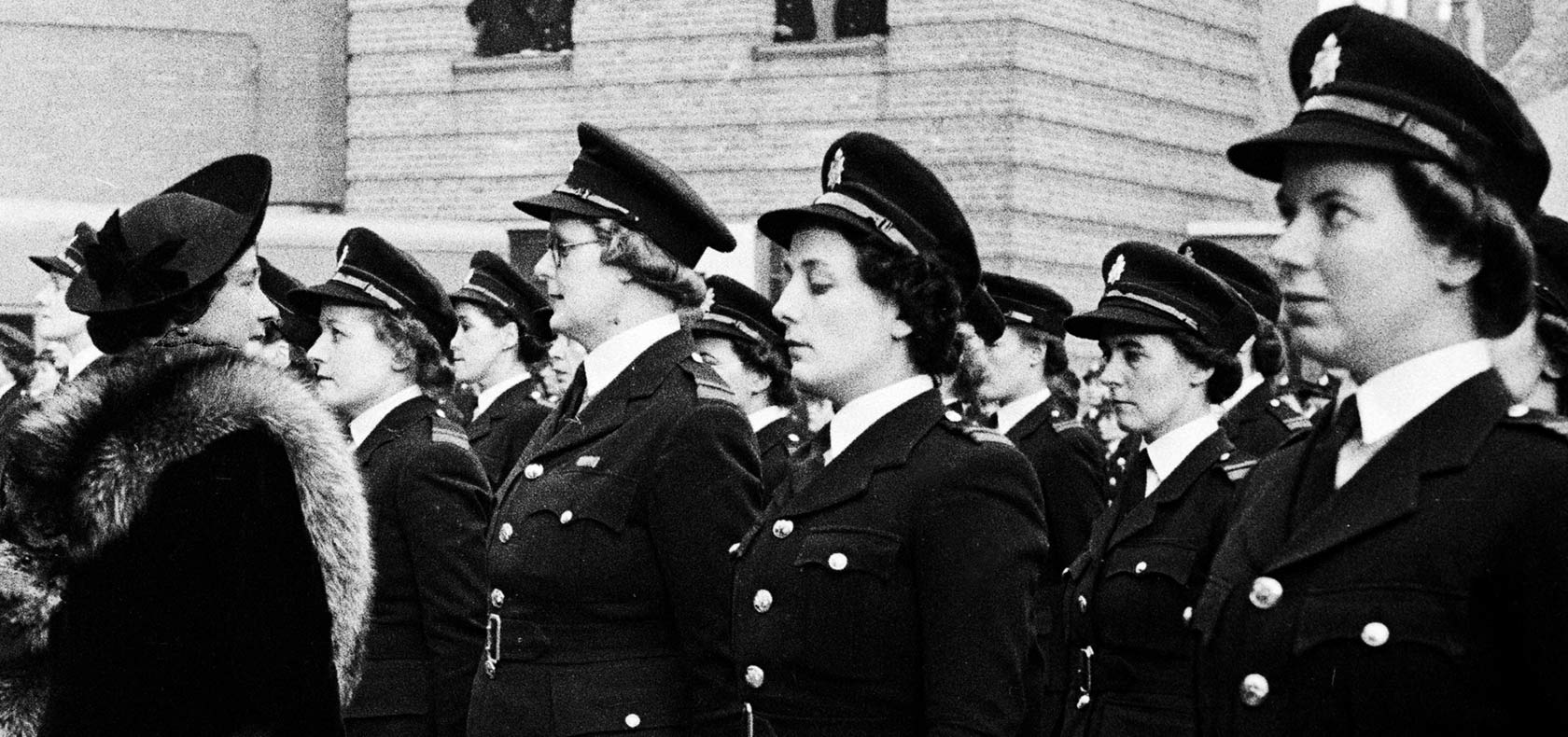
With thanks to Anne's son Peter for kindly sharing her story and the items displayed in this profile.